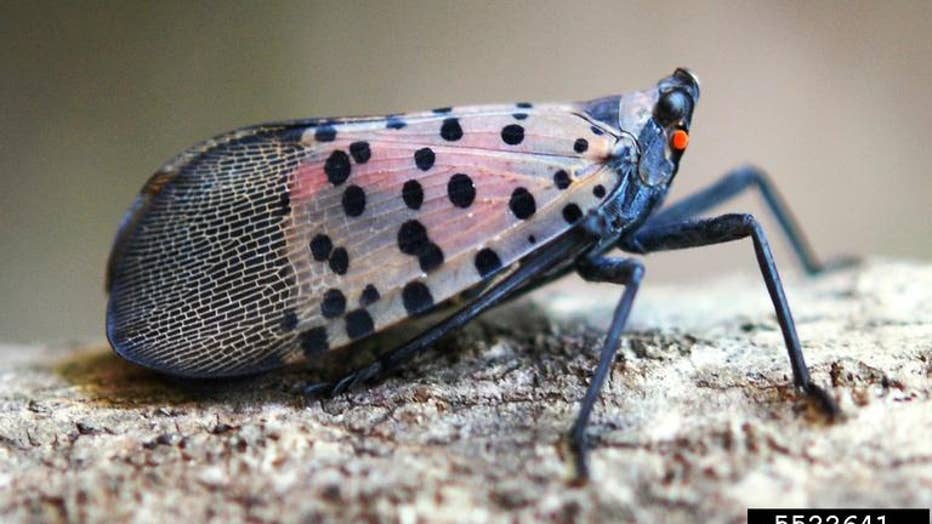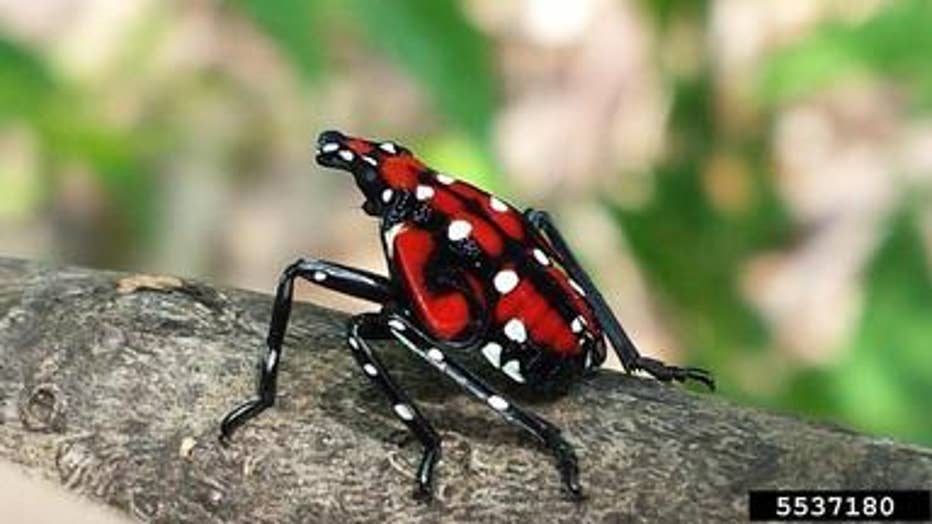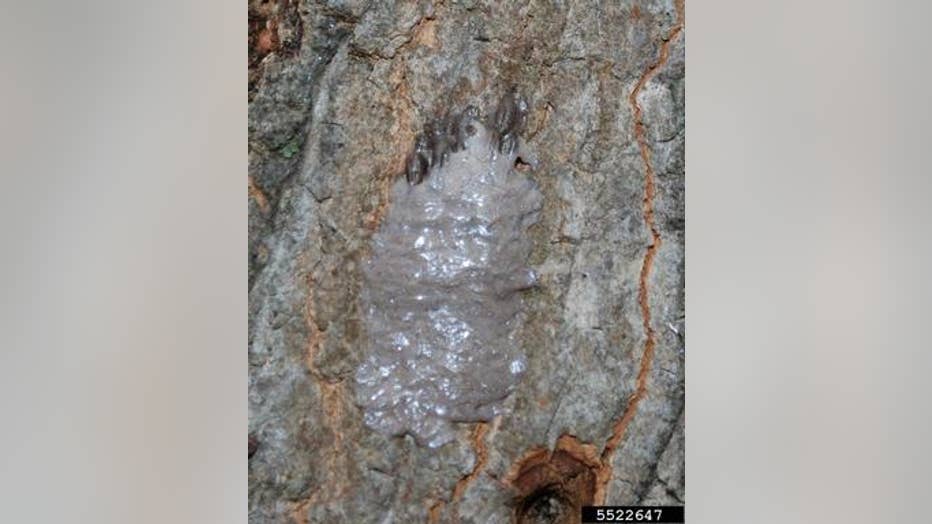Invasive spotted lanternfly found in Michigan for first time
PONTIAC, Mich. (FOX 2) - Spotted lanternfly were found in Michigan for the first time last week.
According to the Michigan Department of Agriculture and Rural Development, the small population of the invasive insects were found in Pontiac. The United States Department of Agriculture confirmed the finding Wednesday.
Spotted lanternfly pose a big danger to the state's agriculture.
"Although not unexpected, this is certainly tough news to share due to its potential to for it to negatively impact Michigan’s grape industry," said MDARD Director Gary McDowell. "Spotted lanternfly has been moving closer to the state over the last few years. MDARD, along with our state, local and federal partners, has been working tirelessly to inform and educate growers and the public about this highly invasive insect."

It could damage or kill more than 70 varieties of crops and plants including grapes, apples, hops, and hardwood trees.
They suck sap from host plants and secreting large amounts of a sugar-rich, sticky liquid called honeydew. This honeydew and the resulting black sooty mold can kill plants and foul surfaces. The honeydew often attracts other pests like yellow jackets, flies, and ants
The insect was first detected in the United States in 2014, and infestations have been confirmed in Connecticut, Delaware, Indiana, Maryland, Massachusetts, New Jersey, New York, North Carolina, Ohio, Pennsylvania, Virginia, and West Virginia.

A spotted lanternfly nymph
They can be easily moved on firewood, tires, campers, vehicles, and more.
Adults are roughly one inch long. Their folded wings are gray to brown with black spots. Open wings reveal a yellow and black abdomen and bright red hind wings with black spots transitioning to black and white bands at the edge.
If you receive shipments from states that have the insect, you should look for adults or egg masses.

A spotted lanternfly egg mass
From late summer to the first hard frost, the insects are in their adult phase. Their eggs, which are in masses with a gray, waxy, putty-like coating that resembles old chewing gum, can survive the cold and hatch in spring.
"MDARD and MDNR are working with the United States Department of Agriculture to define the extent of the infestation," said Mike Philip, MDARD’s Pesticide and Plant Pest Management Division Director. "Although we can’t pinpoint exactly how it got here, it likely hitchhiked on nursery stock brought in from an infested state and has possibly been here for several months. We are in the assessment stage of response, but it is important to note that typical pest management techniques have not proven effective for eliminating the pest in other states."
If you find a spotted lanternfly, report it to the state.
How to avoid transporting spotted lanternfly:
• Check Your Vehicle: Before leaving a parking lot or work site, inspect vehicles for spotted lanternfly egg or insects. Check doors, sides, bumpers, wheel wells, grills, and roofs. If found, destroy any eggs or insects you find.
• Park with Windows Closed: The spotted lanternfly and its nymphs can enter vehicles unsuspectedly. When parked, make sure to keep windows closed.
• Remove and Destroy Pests: Crush nymphs and adult insects. Scrape egg masses into a plastic bag containing hand sanitizer or rubbing alcohol to kill them.
• Remove Host Trees: Spotted lanternflies prefer the ailanthus tree, also known as "tree of heaven." Try to remove trees from properties to avoid attracting spotted lanternfly.
• Report Sightings: Send in required photos to Eyes in the Field. Photos are necessary to verify a report and to aid in identification.

